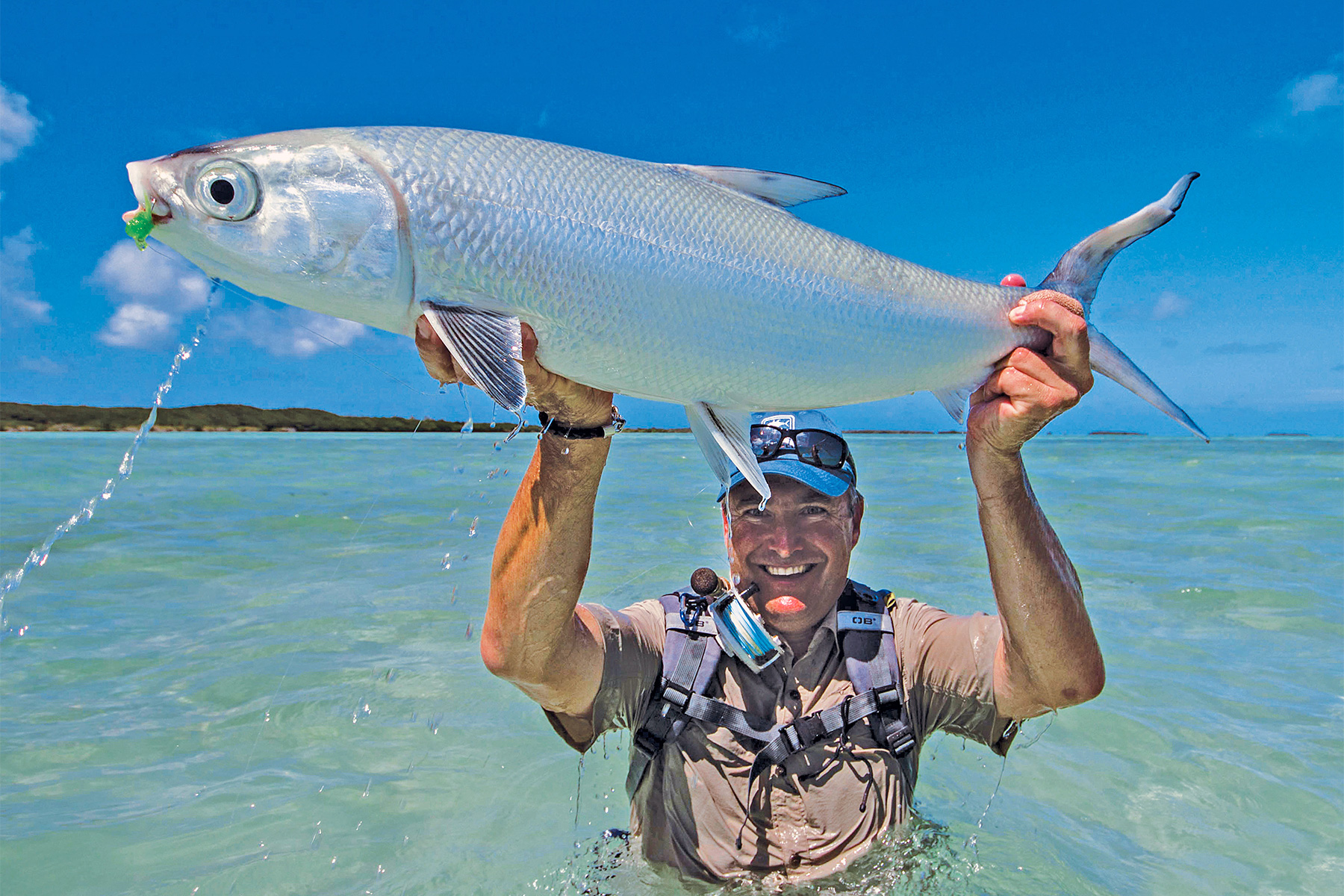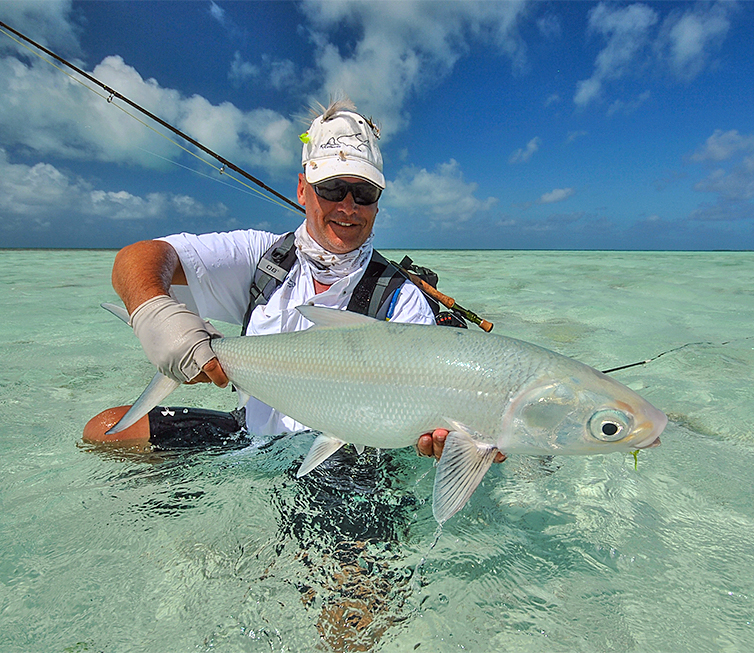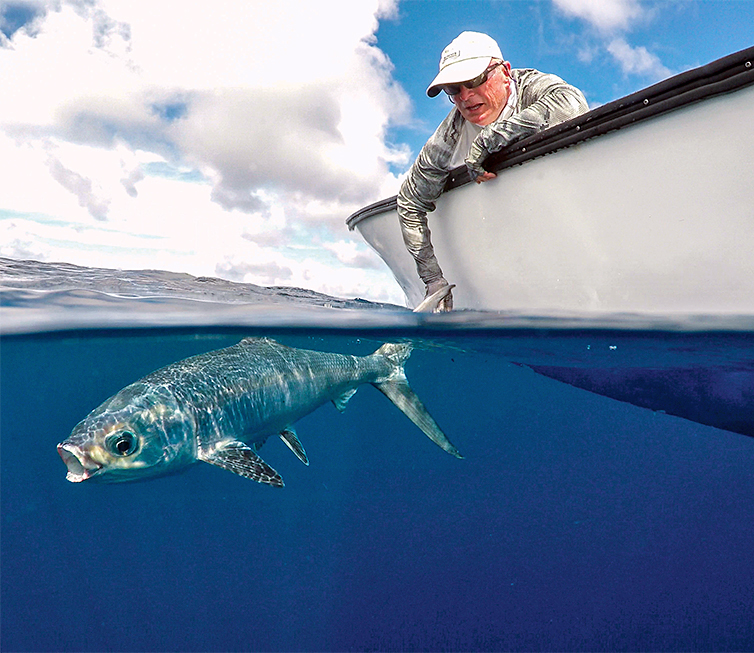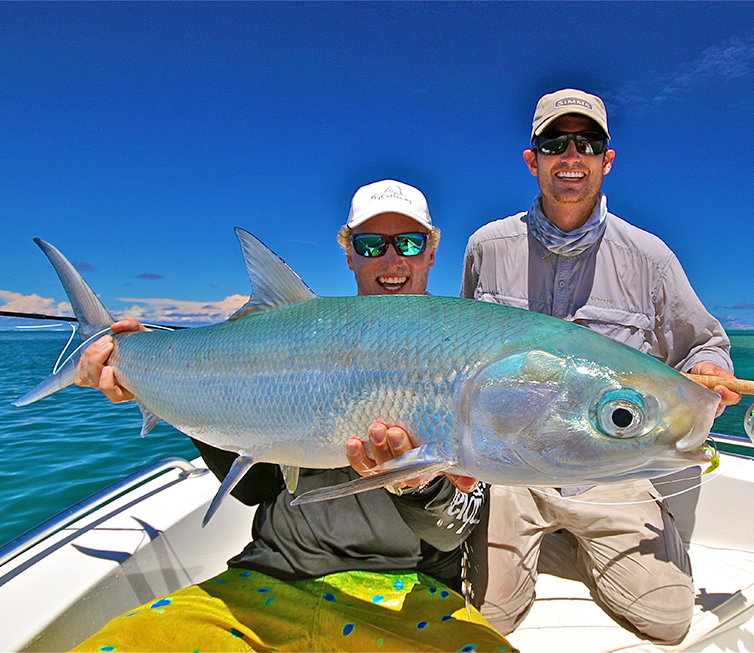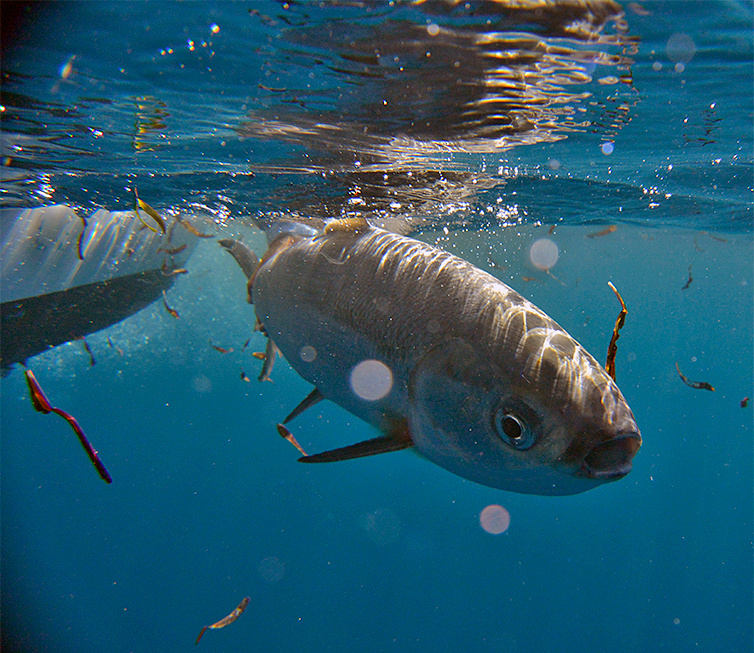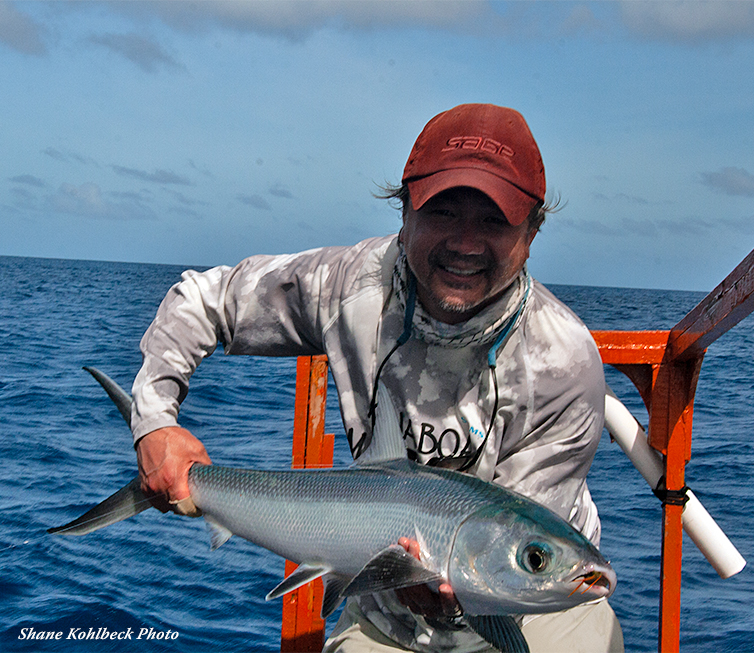The milkfish (Chanos chanos) is the sole living species in the family Chanidae. However, there are at least five extinct genera from the Cretaceous. The repeating scientific name (tautonym) is from Greek khanos (χάνος ‘mouth’).
The milkfish can grow to 1.80 m (5 ft 11 in), but are most often no more than 1 m (39 inches) in length. They can reach a weight of about 14 kg (31 lb) and an age of 15 years. They have an elongated and almost compressed body, with a generally symmetrical and streamlined appearance, one dorsal fin, falcate pectoral fins and a sizable forked caudal fin. The head is small relative to the body. The mouth is small and toothless and the body is olive green, with silvery flanks and dark bordered fins. They have 13-17 dorsal soft rays, 8-10 anal soft rays and 31 caudal fin rays. There are numerous fine intramuscular bones, which may complicate human consumption of the fish.
Milkfish generally feed on algae and small invertebrates. They tend to school around coasts and islands with coral reefs. The young fry live at sea for two to three weeks and then migrate during the juvenile stage to mangrove swamps, estuaries, and sometimes lakes, and return to sea to mature sexually and reproduce. Females spawn at night up to 5 million eggs in saline shallow waters.
